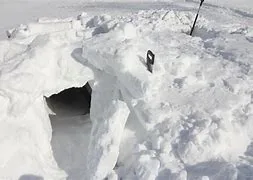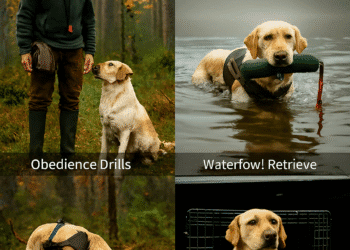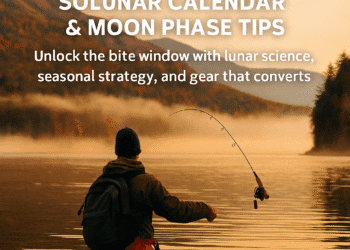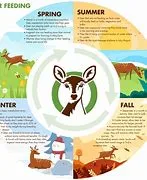Surviving Alaska

Surviving Alaska, known for its rugged terrain, extreme temperatures, and breathtaking landscapes, is both a dream and a challenge for wilderness enthusiasts. But beyond its beauty lies an unforgiving environment that has tested the resilience of adventurers for centuries. This is not just a survival guide—it is the story of a journey, a research expedition into the depths of the Alaskan wild, where each lesson learned was earned through experience, danger, and discovery.
Shop Closeout at Kings Camo1. Entering the Unknown – Surviving Alaska
In the winter of 2024, a small expedition team, including myself, embarked on a mission to document true survival in the Alaskan wilderness and Surviving Alaska. With little more than the gear on our backs, we ventured into the tundra, determined to understand what it truly takes to live off the land. The cold bit deep, and the winds howled through the pines as we left behind the last vestiges of civilization.

Key Challenges:
Surviving the Harshest Cold: Battling the Perils of Extreme Winter Conditions
When winter descends in full force, survival becomes an unforgiving challenge. The coldest regions of the world test the limits of human endurance, pushing both the body and mind to their breaking points. In these extreme environments, every step forward requires careful preparation, resilience, and an understanding of the brutal forces of nature. From plunging temperatures to the ever-present threat of wildlife, isolation, and limited daylight, each aspect of life in extreme cold presents unique obstacles that demand respect and vigilance.
Weather Extremes: Surviving the Bone-Chilling Cold
Winter’s icy grip can be deadly, especially when temperatures plummet to an unthinkable -50°F (-45°C) at night. In such conditions, exposed skin freezes within minutes, leading to frostbite, hypothermia, and a rapid decline in physical function. The cold is not just uncomfortable—it is life-threatening. The air itself feels like an invisible force, stripping away warmth and making even simple tasks monumental challenges.
The key to survival in such extreme temperatures is preparation. High-quality, layered clothing is essential, beginning with moisture-wicking base layers to keep sweat from freezing against the skin, followed by insulating layers that trap body heat, and finally, an outer shell that repels wind and moisture. Additionally, keeping extremities covered with insulated gloves, face masks, and thermal socks prevents dangerous heat loss.
Survivors must also be acutely aware of the dangers of dehydration, as the dry, frigid air saps moisture from the body. Drinking warm fluids regularly and consuming high-calorie foods help maintain energy levels and internal warmth. Any mistake, such as sweating excessively or failing to cover exposed skin, can have dire consequences when temperatures dip below freezing.
Wildlife Threats: The Hidden Dangers Lurking in the Tundra – Surviving Alaska

While extreme cold is a formidable foe, the silence of the tundra hides another danger—wildlife. The stillness of the frozen landscape is deceptive. Every rustle in the brush, every shifting shadow, could signal the presence of a predator. In many Arctic and subarctic regions, wolves, bears, and even smaller but no less dangerous animals roam the land, searching for scarce food sources.
Encounters with wildlife in extreme conditions can be deadly. Polar bears, for example, are powerful and relentless hunters, capable of tracking human scent from miles away. Wolves, while generally avoiding human contact, may become bold if food is scarce. In such situations, maintaining constant awareness of one’s surroundings is critical. Keeping a safe distance, securing food supplies, and knowing how to react to an encounter can mean the difference between life and death.
Perhaps the most insidious threat, however, is exhaustion. The human body is not designed for prolonged exposure to such conditions, and fatigue can lead to fatal mistakes. Disorientation, slowed reaction times, and diminished problem-solving abilities all increase the likelihood of an encounter turning deadly. Resting when necessary and maintaining energy levels are essential survival strategies.
Isolation: The Psychological Battle of Being Completely Alone – Surviving Alaska
Once the last outpost disappears from view, a new and terrifying reality sets in—complete isolation. In the heart of the wilderness, there are no roads, no communication towers, and no nearby settlements. Survival depends entirely on one’s knowledge, instincts, and resourcefulness. The mental challenge of isolation is as daunting as the physical challenges of the cold.

Human beings are social creatures, and prolonged isolation can take a serious toll on mental health. The absence of human contact can lead to paranoia, depression, and anxiety. The key to overcoming this challenge is maintaining structure and purpose. Establishing routines, setting small goals, and keeping a sharp focus on survival tasks can help mitigate the effects of loneliness.
In extreme environments, technology can be both a blessing and a curse. While satellite phones and emergency beacons provide a lifeline, they can also instill a false sense of security. Batteries drain quickly in subzero temperatures, and even the most advanced equipment can fail. Navigating using traditional methods, such as understanding the landscape and tracking the sun or stars, remains a vital skill for anyone venturing into these remote regions.
Limited Daylight: Racing Against the Clock in Eternal Darkness – Surviving Alaska

As winter deepens, daylight becomes an increasingly rare commodity. In the northernmost regions, the sun may disappear for months, leaving the world shrouded in darkness. This lack of light complicates every aspect of survival, from navigation to maintaining morale.
Limited daylight means that every moment of sunlight must be used wisely. Essential tasks such as gathering firewood, setting up shelter, and securing food must be completed before darkness falls. Even with artificial light sources like headlamps and lanterns, the psychological effects of prolonged darkness can be overwhelming. Maintaining a consistent sleep schedule and using light strategically can help regulate the body’s internal clock and prevent the disorienting effects of continuous night.
Survival in extreme winter conditions is not just about endurance; it is about adaptability. Understanding how to work with the environment rather than against it increases the chances of making it through the coldest, darkest days unscathed. Whether preparing for an Arctic expedition or simply learning how to handle unexpected winter emergencies, knowledge is the greatest tool for overcoming nature’s most brutal challenges.
Conquering the Cold with Preparation and Resilience – Surviving Alaska

Surviving in extreme winter conditions require more than just brute strength. It demands intelligence, preparation, and the ability to remain calm under pressure. The challenges of plummeting temperatures, wildlife threats, isolation, and limited daylight are formidable, but they can be overcome with the right mindset and skills.
From wearing the right gear to understanding wildlife behavior, staying mentally strong, and using daylight effectively, every detail matters when facing nature’s most unforgiving elements. Whether you’re an adventurer seeking the thrill of the wilderness or someone preparing for unexpected winter emergencies, knowing how to survive in the cold is a skill that can mean the difference between life and death.
In the end, the cold is not just an enemy; it is a teacher. Those who respect its power, prepare diligently, and embrace the challenges it presents will emerge stronger, wiser, and ready to conquer even the harshest winter landscapes.
2. The Gear That Saved Us – Surviving Alaska
Packing for survival is a science, and we learned quickly what worked and what failed. Our layers of synthetic and wool clothing kept us dry, while fire-starting kits became our most valuable tools. Even the best maps and GPS devices could not fully prepare us for the terrain, forcing us to rely on instinct and observation.

Lessons Learned:
- Fire: Without an immediate fire, we would have perished the first night. Gathering dry tinder beneath logs was the difference between warmth and frostbite.
- Shelter: We tested lean-tos, snow caves, and natural rock formations, each with its own advantages and drawbacks.
- Weapons: A rifle for protection was necessary, not just for hunting but for deterrence against predators who watched us from the shadows.
- Food Storage: We learned quickly that improperly stored food attracts animals. Hanging our rations in a tree away from camp became a daily ritual.
- Backup Gear: A second knife, an extra fire starter, and additional socks proved invaluable.
3. Water: A Matter of Life and Death – Surviving Alaska
Our first major challenge was securing water. The rivers were frozen, and consuming ice only drained our body heat. Snow, melted and boiled, became our lifeline, though it required precious fuel.

Water Sources Explored:
- Glacial Meltwater: Pure but often difficult to access, requiring us to chip away at frozen surfaces.
- Rivers Beneath the Ice: Dangerous to reach but rich in minerals. We had to create holes with an axe and use containers tied to ropes.
- Rainwater Collection: Though rare in winter, a tarp proved useful when precipitation fell.
- Tree Wells: Snow around the bases of trees often contained melted water pools that we filtered before drinking.
- Solar Water Collection: In daylight, we placed dark containers on ice to speed up the melting process, an energy-efficient way to obtain water.
4. Fire and Shelter: A Battle Against the Cold – Surviving Alaska

One night, a blizzard set in, forcing us to dig a snow cave. Inside, the insulation was miraculous—20 degrees warmer than the outside world. We built fires from pine resin and carried embers wrapped in bark to transport warmth between camps.
Hard-Won Shelter Wisdom:

- Snow caves provide warmth but require ventilation to prevent suffocation.
- Rock overhangs shield from wind but must be checked for predators.
- A lean-to is easy to build but offers little insulation.
- Layering pine boughs under a sleeping bag prevents heat loss to the frozen ground.
- Ice block wind barriers around tents reduce wind chill.
- Digging depressions in snow beneath a fire helps retain heat longer.
5. Hunting and Foraging: Nature Provides—But at a Cost – Surviving Alaska

Food was our next greatest struggle. We tracked caribou, but the hunt required patience and energy we barely had. Fishing proved more successful—using a hand-carved spear, we caught Arctic grayling beneath the ice. Foraging was limited, though we found edible berries preserved by the cold and used tree bark for nutrients.
Hardships and Discoveries:
- Trapping requires minimal energy and offers steady food. We set snares for rabbits with moderate success.
- Fishing beneath the ice was more successful than land hunting. We fashioned a simple ice-fishing line with hooks made from bone.
- Fat is essential. Without it, even full stomachs left us starving. We rendered fat from game into a paste for energy.
- Mushrooms found on dead trees were edible but only in moderation.
- We boiled pine needles into tea for vitamin C to prevent scurvy.
- Lichen and moss provided emergency sustenance but lacked calories.
- We observed animal behavior—birds often led us to hidden food sources like caches of nuts.

6. Wildlife Encounters: The Watchful Eyes in the Dark – Surviving Alaska

One night, we awoke to a low growl. A grizzly had caught our scent. We followed protocol—firing a warning shot and making ourselves look larger. It worked, but we slept with one eye open. Later, we crossed paths with a moose—just as dangerous if provoked.
Survival Tactics:
- Bears: Avoid at all costs. Store food high in trees, away from camp. Always carry bear spray and a firearm.
- Moose: Never approach. If charged, find cover immediately. We once hid behind a boulder while a bull moose charged past.
- Wolves: Travel in groups and keep fires burning at night. We heard howls in the distance but never had a direct confrontation.
- Ravens: Their calls sometimes indicated nearby predators or carrion, leading us to valuable food sources.
- Foxes and small scavengers: These animals often followed us, attempting to steal leftovers. We secured food tightly and kept scraps buried.**
7. The Journey Back: Navigating Home – Surviving Alaska

The moment we turned back towards civilization was bittersweet. Our bodies were lighter from lost weight, our minds sharper from experience. But we had survived. We used stars, river flows, and landmarks to find our way back. After weeks in the wild, the sight of roads felt unreal.
Final Lessons: Surviving Alaska
- Navigation is a skill, not a tool. Maps help, but instinct is stronger.
- Rescue signals only work if someone is looking—never rely solely on them.
- The wild does not care if you live or die. Respect it, and it may allow you to pass.
- Cold numbs the mind—staying mentally sharp is as important as physical survival.
- Every mistake in the wild costs energy or resources. Efficiency means survival.
Conclusion
This was more than a survival experience—it was a journey into the core of human endurance. The Alaskan wilderness does not forgive mistakes, but it rewards those who listen, adapt, and respect its power.
For anyone who seeks to follow in our footsteps, prepare well. Your survival will depend on your knowledge, your resilience, and your ability to embrace the unforgiving beauty of the wild.
In the end, the greatest lesson we learned was this:
Survival is not about conquering nature. It is about becoming a part of it.
























